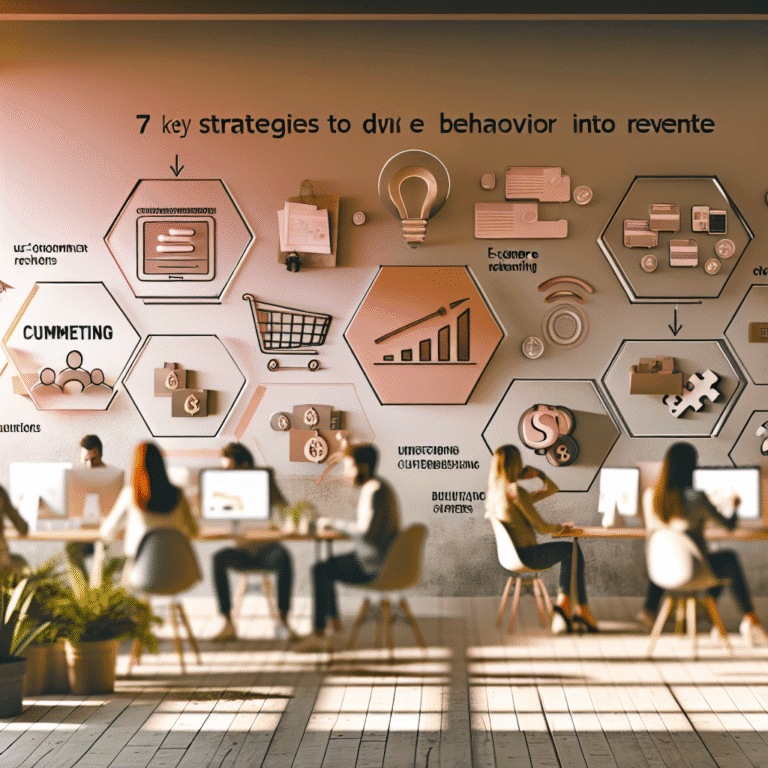Increase E-commerce Conversion Rates with a Little Behavioural Psychology Magic
E-commerce brands are in a bit of a pickle these days. They're drowning in data, focused on click-through rates and customer acquisition costs. But here's the catch: they're missing the human aspect buried deep in all those numbers.
We've become pros at pleasing the algorithms, but what about the actual humans—the shoppers who are impulsive and a tad distracted? Algorithms might be whiz kids, but humans have hearts and minds that need different tactics. If you're hitting a ceiling with A/B tests and endless button colour swaps, you're likely tuning your efforts for robots.
The solution? Speak the language of those browsing: feelings, impulses and trust. It's all about using psychology to outsmart the algorithms and boost those e-commerce conversions.
Understand Why Shoppers Click (or Don't)
Analytics are decent at pointing out what shoppers do. But they aren't as skilled at explaining why shoppers hesitate, scroll past, or bounce off. True, user behaviour might not make sense on the surface. But it does follow certain patterns if you know which buttons to press. Let's explore some of the most influential ones:
- Cognitive Load: Simplify choices to remove friction. Less brain work equals better decision speed.
- Social Proof: Monkey see, monkey do. Shoppers follow the crowd. Show off numbers and reviews.
- Loss Aversion: Fear of missing out trumps potential gain. Use it, but no trickery, please.
- Anchoring Bias: The first price someone sees sticks in their head and decides their perception.
- Paradox of Choice: Too many options and it's decision paralysis. Be a minimalist editor.
- Trust Cues: No trust, no sale. Reassurances help buyers cross that finish line.
It’s almost like academia gifted these solutions just for us. If Kahneman and Cialdini wore business suits, they'd be e-commerce gurus.
Ten Psychological Hacks for a Conversion Boost
No need for brain scans or a psychology degree. These tried-and-true tactics could see your sales charts going skyward. Let's dive in.
Start with Price Anchoring
First impressions count, especially with price.
- Lead with a high-priced option.
- Introduce a "best value" option to sit neatly in the middle.
- Bundle cheap items for perceived higher value.
For instance, The Ordinary threw up a "£35 starter pack" and watched as bundle purchases jumped by 28% compared to solo items under a tenner.
Scarcity and Urgency: Use, Don’t Abuse
Scarcity triggers that age-old fear of missing the boat. But fake timers can ruin your credibility. Try these:
- Show real-time low stock levels ("Only 3 left in Small").
- Stress delivery cut-off dates.
- Tag items with viewers' count ("1,120 folks checked this out").
Wayfair's real-time availability tracking saw urgency-driven conversions leap by 19%. Fear of loss does work, but honesty wins trust.
Simplify and Declutter
Too much noise stalls decision-making. A clean page sends the mind on a smoother river.
- One call to action per view.
- Trim unnecessary form fields.
- Keep text punchy and to the point.
A tidy page offers a friction-free decision zone. Every click less is a visit saved.
Trust Through Bite-Sized Social Proof
People dread they're the first. Little reassurances can work wonders:
- 14 folks bought this in the last 12 hours.
- Seen by thousands on TikTok.
- Photo reviews with local touches ("Spotted by Jules from Birmingham").
Spiegel Research found that adding reviews might increase conversion by as much as 270% on high-priced items.
Reframe Shipping as a Bonus
Free shipping? Grand! Framing even paid shipping cleverly can make it feel premium.
- "Express tracked for £3.99 (with a £4 saving)".
- "Priority in the shipping queue".
- "Free tracked delivery upgrade today".
It’s not what you charge but how it’s presented. Value appeals, while pain doesn’t.
Use Staged Information to Prevent Overwhelm
Ask for everything upfront, and you might scare prospects off.
- Break down forms into steps ("Step 1 of 3").
- Autofill for returning visitors.
- Let buyers save carts without needing to create an account right away.
ASOS noticed a 20% drop in drop-offs by simply streamlining checkout.
The "Foot-in-the-Door" Technique
Start with a little yes and work towards the bigger goal.
- An email to save items.
- A size for future follow-ups.
- A wishlist click to get them browsing.
Think of it like dating: start with a friendly chat before you plan the wedding.
Make Trust Signals Personal
Plain badges don’t cut it anymore. People trust people more than stamps.
- Chat with "Lisa is available now".
- Recognised courier logos.
- Real-time help that feels human ("Dan here to assist").
Even your “About” page should have soul. Charm goes a long way.
Value Reframing to Make Prices More Palatable
If you want a price to seem doable, try metaphor.
- "Only 60p a day—cheaper than the bus".
- "Save 4 hours weekly instead of 'Automates your tasks'".
- "Speedy delivery for just £3".
People buy the solution, not the specs. Show them what it feels like.
Default Bias to Steer Decisions
Easy roads make for more travellers.
- Pre-select those best-selling packages.
- Highlight popular plans.
- Let carts remember previous picks.
As Ariely might say, defaults not only steer but greatly influence decisions.
How a Little £2 Dust-Up Worked Wonders
A British accessory store tried out two shipping options:
- "Standard shipping – £2.99"
- "Tracked delivery for security – £4.99 (worth it!)"
The pricier tracked option didn't just win. Conversion rates shot up by 17%. That extra £2 was seen as a security toll, not a gouge. A fine example of reframing and trust-building working in tandem.
Final Musings: People First, Algorithms Second
If your online shop seems stuck, it might not be a tech snag. Our solutions have to start human-first. When you preserve emotion over logic and cater to actual people instead of data points, extraordinary things happen.
Here's something to mull over: Imagine your slightly distracted, mildly intrigued visitor—what would they feel compelled to do? That's the kind of scenario behavioural psychology thrives in.
Conversion isn't merely a statistic. It's an experience. Make it a simple, honest, and emotionally fulfilling journey, and watch those supposedly elusive sales manifest.





